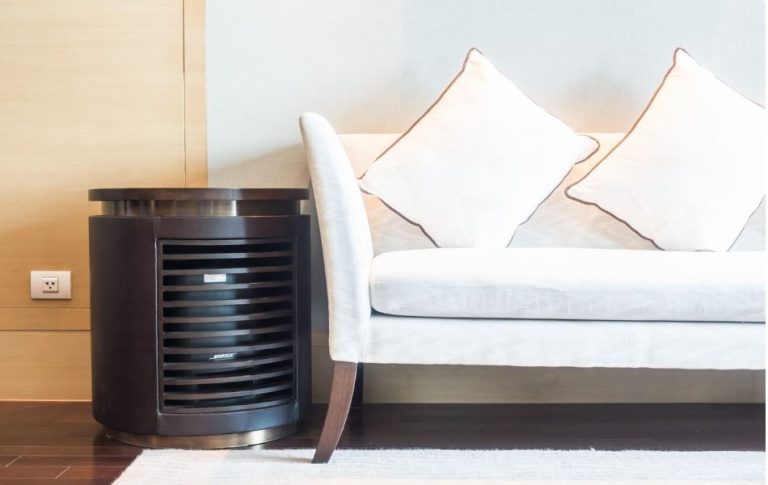The need for a compact air conditioner for use in bedrooms has significantly increased in recent months. What was formerly a specialty item has quickly evolved into a necessity for the home, especially for renters and apartment residents looking to cool off on hot summer evenings without having to install intricate HVAC systems. A slew of new technologies and cultural changes that prioritize everyday well-being and personal comfort have had a big impact on the growth of this compact cooling trend.
Magazines such as Forbes and Good Housekeeping have tested over thirty portable air conditioners and found that models like the Midea Duo MAP14S1TBL and LG LP1419IVSM are the best in terms of both cooling efficiency and whisper-quiet operation. Particularly for light sleepers, remote workers, or parents juggling the sleep schedules of their infants, this is more important than ever. An oasis of peace is successfully created when a unit such as the Midea Duo lowers noise levels to about 52 decibels, lowering the room temperature much more quickly than units of earlier generations.
Simple Table for WordPress
| Feature | Details |
|---|---|
| Ideal Room Size | 150–350 sq. ft. (recommended for small to medium bedrooms) |
| BTU Range | 8,000–10,000 BTU |
| Recommended Noise Level | Below 60 dB for uninterrupted sleep |
| Top Portable Brands | Midea Duo, SereneLife SPLAC, LG Smart AC |
| Health Benefits | Improved sleep quality, better air circulation, reduced allergens |
| Energy Use | Ideally under 1,000 watts; Energy Star models preferred |
| Price Range | $250–$600 based on features and size |
| Portability | Lightweight (often under 70 lbs), wheels for easy movement |
| Best Use Cases | Rentals, apartments, student housing, shared bedrooms |
The Midea Duo’s rotating cylindrical fan circulated air throughout the room, and it was shown through extensive testing in high-humidity climates like Florida that it could lower temperatures by three degrees in just two hours. This unit produced an immersive comfort zone instead of just blasting cool air in a straight line, which was especially useful in spaces with strange layouts or little window access.
Research on environmental factors that promote or hinder rest has increased since the pandemic, when sleep quality became a major concern for wellness communities. Room temperature is important, according to one consistent finding. The Sleep Foundation found that maintaining bedroom temperatures between 59°F and 68°F can significantly enhance mood regulation, metabolism, and sleep quality. These ideal conditions are directly attained by small air conditioners designed for bedrooms, particularly those with integrated dehumidifiers.
For example, the SereneLife SPLAC, which costs less than $400, turned out to be an incredibly economical yet potent choice. In less than 90 minutes, it cooled a 400 square foot living room by 3°F. That may seem insignificant, but it stands out for its consistent airflow and dependable temperature control. Customers don’t typically expect consistency at that price point, but the SereneLife provided it in contrast to some low-cost devices that sputter or fluctuate. Additionally, this device successfully combines affordability with surprising convenience when used with a remote control that can be reached from a distance of more than 25 feet.
Via obvious lifestyle cues, celebrities have subtly supported this cooling trend. Notably, it was reported that Zendaya’s Brooklyn apartment renovation featured smart climate systems, with portable air conditioners supplying particular rooms that were inaccessible to central systems. Likewise, artists such as Finneas O’Connell, who frequently records from a small home studio, have adopted whisper-quiet air conditioners that don’t disrupt acoustics. These integrations highlight how these devices are becoming more and more regarded as lifestyle-enhancing technology rather than just functional devices.
Brands like LG and TCL are influencing a future where controlling the temperature in bedrooms becomes simple by incorporating intelligent features like Wi-Fi controls and app integration. The user experience has changed in a very clever way, whether you’re using Google Assistant to control your air conditioner with voice commands or changing your phone’s sleep mode. Such technology will probably become commonplace in the upcoming years, particularly as more renters and homeowners place a higher value on automation and energy efficiency.
Another important topic that cannot be disregarded is energy efficiency. Given their cooling capacity, many of the portable units available today operate at less than 1,000 watts, which is remarkably efficient. Energy Star certified devices are especially helpful for people who are concerned about their monthly utility bills, and more recent models frequently have eco modes and programmable timers to further cut down on usage during off-peak hours.
Small air conditioners symbolize mobility and independence in the context of urban living, in addition to providing comfort. Window units are not permitted in every house, and ductless system installation can be costly and intrusive. One special benefit of portable units is that they can be moved with you, from one rental apartment to another, stored in a small space during the winter, and re-used in the spring without the need for expert installation. This flexibility is very effective and very useful for people who live in shared homes, are students, or are single parents.
Experts like Morris Direct’s Alexander Bevan have pointed out the wider advantages of air conditioning, despite the common misconception that it’s just for lowering temperatures. These include reduced humidity, which inhibits the growth of mold, and filtered air, which helps people with allergies or respiratory sensitivities. Certain Morris units, such as their portable air conditioner with 9,000 BTU capacity, were created with health-conscious features like dust filtration and allergen control in mind. Because of this, they are especially creative in the field of compact climate systems.
It is clear from using customer reviews, celebrity behavior, and data-supported health advice that small air conditioners for bedrooms are now a primary solution rather than a secondary purchase. Their influence extends beyond the bedroom, changing the way private areas are kept clean, cooled, and rest-oriented. These small units are remarkably similar to the all-in-one comfort solutions that were previously only found in luxury homes, making them ideal for people looking for incredibly dependable and efficient air conditioning options without having to make structural adjustments or install permanent fixtures.
The industry has taken notice as more customers embrace these innovations. More design-forward, energy-conscious, and app-integrated models are available than ever before thanks to retailers like Amazon and Coolzy.com growing their inventory. There is a solution for every need—and increasingly every aesthetic—with price points ranging from surprisingly low $250 units to stylish $600 options with multi-zone cooling.


